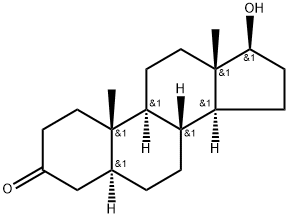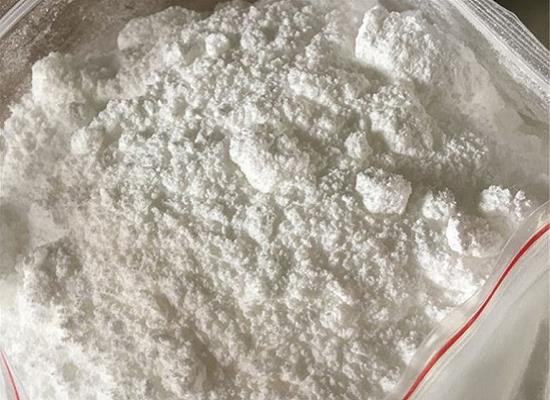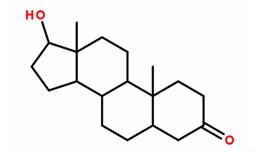Stanolone: Pharmacology, Clinical Applications and Analytical Methods
General Description
Stanolone, also known as dihydrotestosterone (DHT), is a synthetic androgen hormone that binds to androgen receptors, leading to anabolic effects such as muscle growth and strength. It can also competitively bind to the estrogen receptor alpha and has mineralocorticoid activity. Stanolone is mainly used in the treatment of breast cancer, particularly for patients who have developed resistance to other forms of hormone therapy. However, it should be used with caution due to potential side effects including acne, hair loss, and liver toxicity. Liquid chromatography tandem-mass spectrometry (LC-MS/MS) is the recommended method for accurately measuring Stanolone levels in serum.
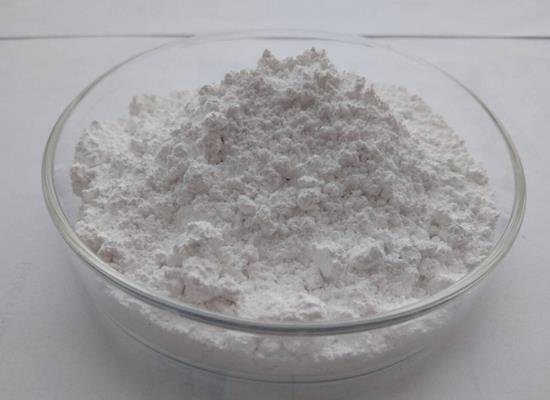
Figure 1. Stanolone
Pharmacology
Stanolone, also known as dihydrotestosterone, is a synthetic androgen hormone that binds to the androgen receptor in various tissues throughout the body. This binding results in increased protein synthesis and cell growth, leading to anabolic effects such as muscle mass and strength. Stanolone also inhibits the actions of estrogen on target tissues by competitively binding to the estrogen receptor alpha. It also has mineralocorticoid activity, which can lead to sodium and water retention. Stanolone is poorly absorbed orally, with bioavailability ranging from 0-2%. Once absorbed, it undergoes extensive metabolism in the liver to form several metabolites, including 11-Oxo-androsterone glucuronide, 3-alpha-Androstanediol glucuronide, and 11-beta-Hydroxyandrosterone-3-glucuronide. The oral LD50 for Stanolone in rats is 7060 mg/kg and in mice is 3450 mg/kg. The most common side effects include acne, hair loss, and prostate enlargement. Long-term use of Stanolone may also increase the risk of cardiovascular disease and liver toxicity. In summary, Stanolone is a synthetic androgen hormone that binds to the androgen receptor and has anabolic effects on muscle mass and strength. It also competitively binds to the estrogen receptor alpha, has mineralocorticoid activity, and is poorly absorbed orally. Its use should be carefully monitored due to potential side effects and toxicity. 1
Clinical applications
Stanolone is a synthetic androgen hormone that has been used in the treatment of breast cancer. Breast cancer is an aggressive disease that affects both men and women and has a high mortality rate. Androgens like Stanolone have been shown to inhibit the growth of breast cancer cells by binding to androgen receptors on the surface of the cells. Clinical studies have found that Stanolone can be effective in treating breast cancer patients who have become resistant to other types of hormone therapy, such as tamoxifen or aromatase inhibitors. In these cases, Stanolone can be used as a second line treatment to slow the growth of the cancer cells and improve overall survival rates. However, it should be noted that Stanolone is not without its potential side effects. These can include acne, hair loss, and an increase in body hair growth, as well as more serious complications such as liver damage and cardiovascular events. Therefore, it is important that patients are closely monitored by their healthcare providers while undergoing treatment with Stanolone. In conclusion, Stanolone has shown promise as a treatment option for breast cancer patients who have become resistant to other forms of hormone therapy. While it is not without its potential risks and side effects, it can be a valuable tool in the fight against this deadly disease. 2
Analytical methods
Analytical methods for measuring Stanolone in serum have evolved over time, with liquid chromatography tandem-mass spectrometry (LC-MS/MS) now considered the most accurate method. Studies have established consistent normal ranges for Stanolone levels in adult men using LC-MS/MS, with reference ranges varying based on age groups. For instance, in healthy adult men aged 18 to 59 years, a Stanolone reference range of 14 to 77 ng/dL has been reported. Older immunoassay methods like direct radioimmunoassay (RIA) and enzyme-linked immunosorbent assay (ELISA) were found to overestimate Stanolone levels compared to LC-MS/MS, particularly at low hormone concentrations. These discrepancies were attributed to the lack of specificity in the DHT antibodies used in the older assays and cross-reactivity with testosterone (T). Therefore, caution is advised when interpreting Stanolone values not measured by LC-MS/MS or RIA without proper T removal methods. Studies utilizing LC-MS/MS for Stanolone measurement provide more reliable data and should be prioritized for accurate assessment of Stanolone levels and ratios. 3
Reference
1. Stanolone. Drugbank, DB02901.
2. KENNEDY BJ. The effect of stanolone in the treatment of advanced breast cancer. Cancer. 1955;8(3):488-497.
3. Swerdloff RS, Dudley RE, Page ST, Wang C, Salameh WA. Dihydrotestosterone: Biochemistry, Physiology, and Clinical Implications of Elevated Blood Levels. Endocr Rev. 2017;38(3):220-254.
Related articles And Qustion
Lastest Price from Stanolone manufacturers

US $10.00/box2025-10-12
- CAS:
- 521-18-6
- Min. Order:
- 1box
- Purity:
- 99.99%
- Supply Ability:
- 100000box
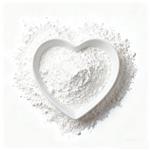
US $0.00/box2025-09-26
- CAS:
- 521-18-6
- Min. Order:
- 1box
- Purity:
- 0.99
- Supply Ability:
- 10tons
